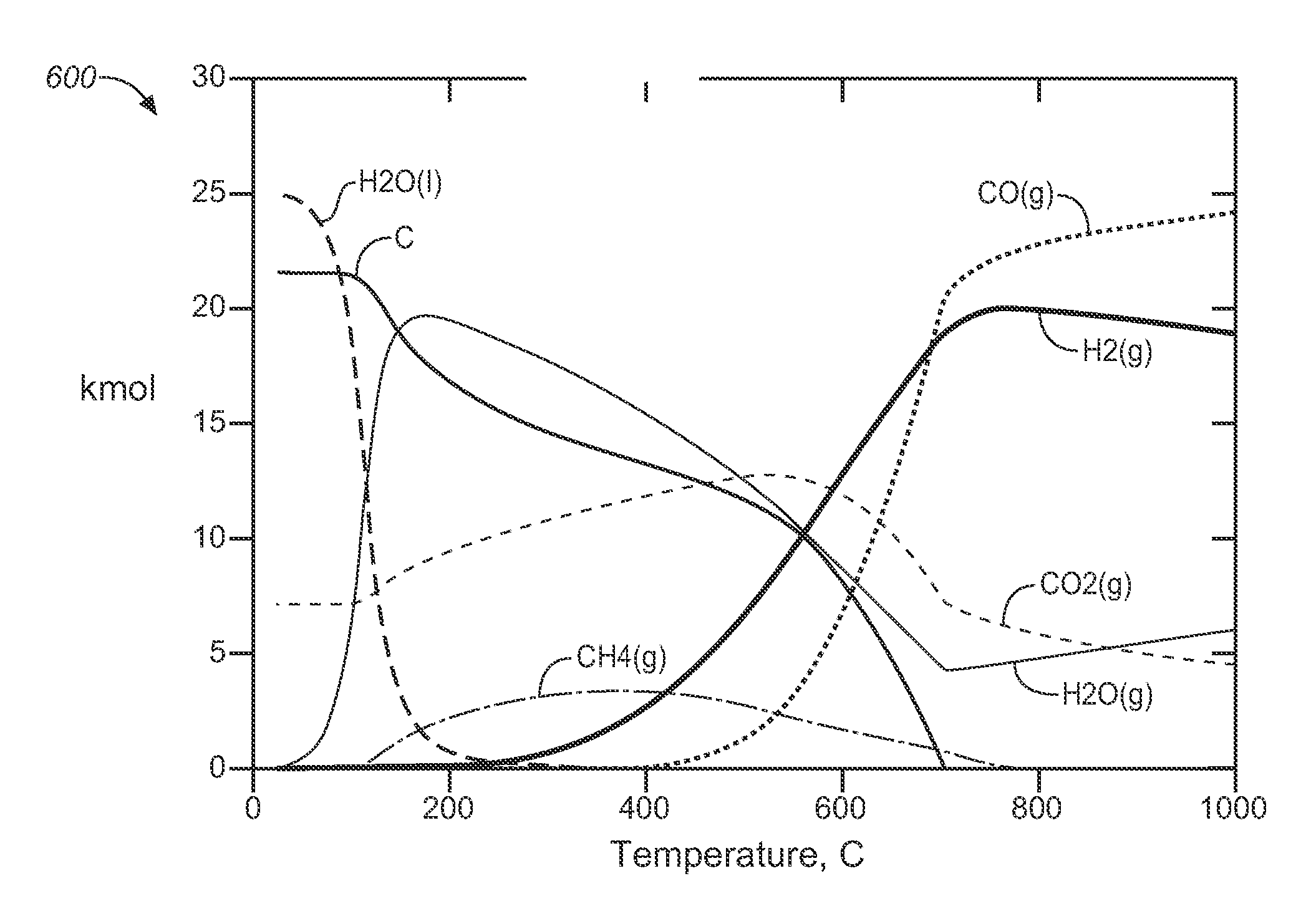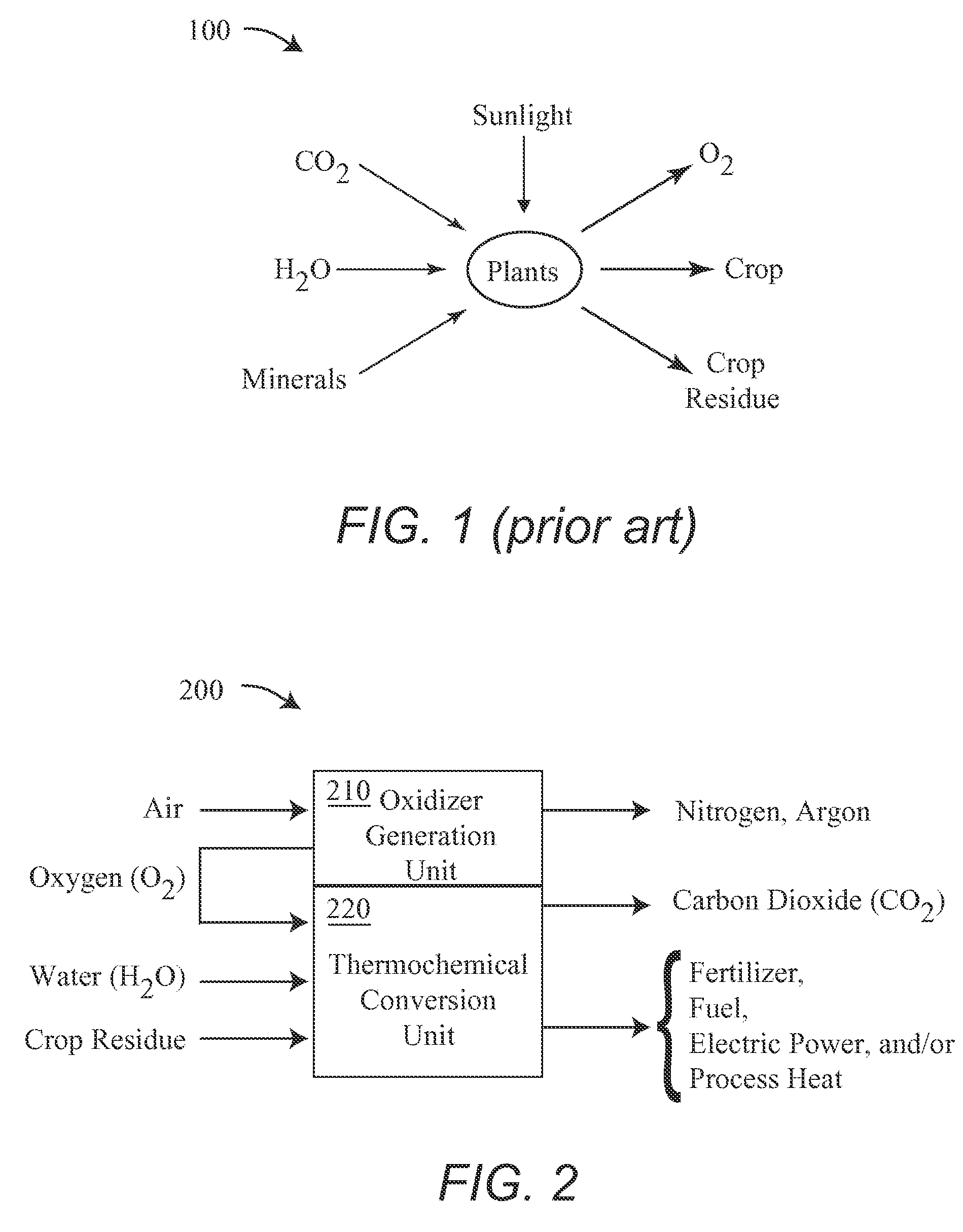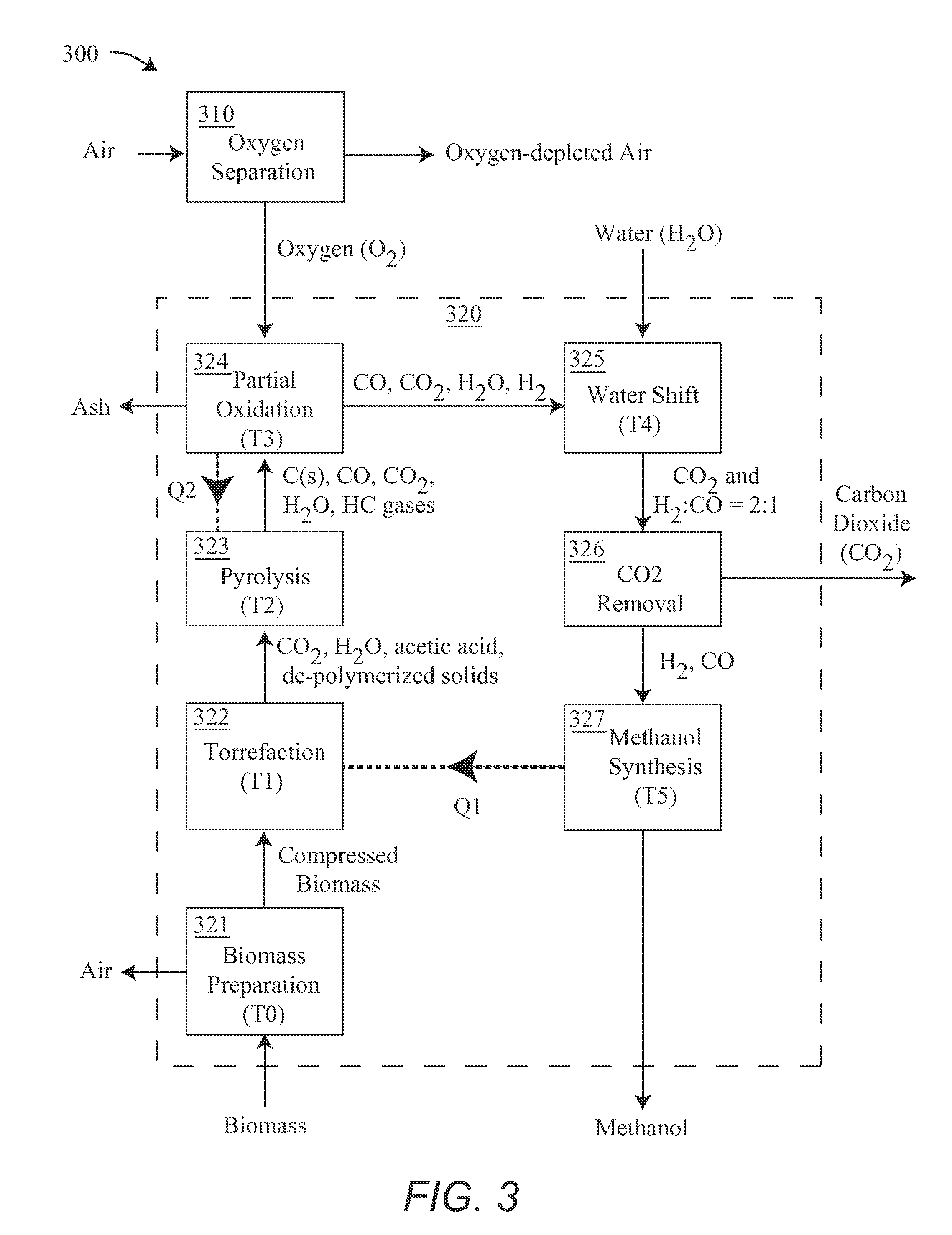Biomass energy conversion apparatus and method
a technology of biomass energy and apparatus, which is applied in the direction of waste based fuel, combustible gas production, fuels, etc., can solve the problems of difficult to refine cellulosic materials in residuals into fuels, no generally useful or economic means, and pollutant into, so as to prevent soot formation, improve the efficiency and cost efficiency, and improve the effect of hydrogen-to-carbon monoxide ratio
- Summary
- Abstract
- Description
- Claims
- Application Information
AI Technical Summary
Benefits of technology
Problems solved by technology
Method used
Image
Examples
first embodiment
[0030]FIG. 2 is a schematic of a first embodiment biomass energy conversion apparatus 200. Apparatus 200 includes an oxygen production unit 210 and a thermochemical conversion unit 220. Also shown in FIG. 2 is the flow of air, water, and crop residue into apparatus 200, and the flow of nitrogen, argon, a fuel, carbon dioxide, and fertilizer from apparatus 200. Although FIG. 2 shows oxygen production unit 210 and thermochemical conversion unit 220, in certain embodiments, portions of the units are integrated or shared.
[0031]Biomass energy conversion apparatus 200 may work in conjunction with prior art agricultural process 100 to convert agricultural crop residue into useful products including, but not limited to, one or more of a fuel, electric power, fertilizer, or process heat. The fuel may be, for example and without limitation, a liquid fuel, such as methanol or dimethyl ether. In addition, apparatus 200 may also produce concentrated streams of nitrogen and / or carbon dioxide, whi...
second embodiment
[0054]FIG. 4 is a schematic of a process 400 for a biomass energy conversion apparatus which may be, for example and without limitation, biomass energy conversion apparatus 200. Process 400 is generally similar to process 300, except as explicitly discussed below.
[0055]In process 400, oxygen from oxygen separation process 310 is provided to partial oxidation process 324 and a pyrolysis process 423. The energy to drive the pyrolysis reactions in pyrolysis process 323, which was, for example supplied by Q2 in processes 300, is supplied by exothermic reactions between oxygen and the other gases entering the pyrolysis. Thus, for example, the equipment to carry out pyrolysis process 432 includes a burner to combust oxygen to increase the temperature of the pyrolysis process to a value of T2.
[0056]Also in process 400, heat in the amount of Q3 is provided from partial oxidation process 324 to a thermal electric generator 401, which powers oxygen separation process 310. Some of the power fr...
third embodiment
[0057]FIG. 5 is a schematic of a process 500 for a biomass energy conversion apparatus which may be, for example and without limitation, biomass energy conversion apparatus 200. Process 500 is generally similar to processes 300 and / or 400, and includes a thermochemical conversion process 520 which is generally similar to processes 320, except as explicitly discussed below. Specifically, process 500 has components that may be configured to achieve different outputs from a biomass stream and in which electricity is chosen as the primary output.
[0058]Process 520 includes an electric generator 501, heat exchange processes 503 and 505, a condenser process 507 and a compression process 509. Process 520 converts biomass into electricity in electric generator 501, which requires an energy rich stream that does not have to have the specific concentrations required of a fuel synthesis reaction. Process 520 therefore does not require a water shift process to obtain specific molar ratios, as do...
PUM
| Property | Measurement | Unit |
|---|---|---|
| electric | aaaaa | aaaaa |
| heat | aaaaa | aaaaa |
| electric power | aaaaa | aaaaa |
Abstract
Description
Claims
Application Information
 Login to View More
Login to View More - R&D
- Intellectual Property
- Life Sciences
- Materials
- Tech Scout
- Unparalleled Data Quality
- Higher Quality Content
- 60% Fewer Hallucinations
Browse by: Latest US Patents, China's latest patents, Technical Efficacy Thesaurus, Application Domain, Technology Topic, Popular Technical Reports.
© 2025 PatSnap. All rights reserved.Legal|Privacy policy|Modern Slavery Act Transparency Statement|Sitemap|About US| Contact US: help@patsnap.com



